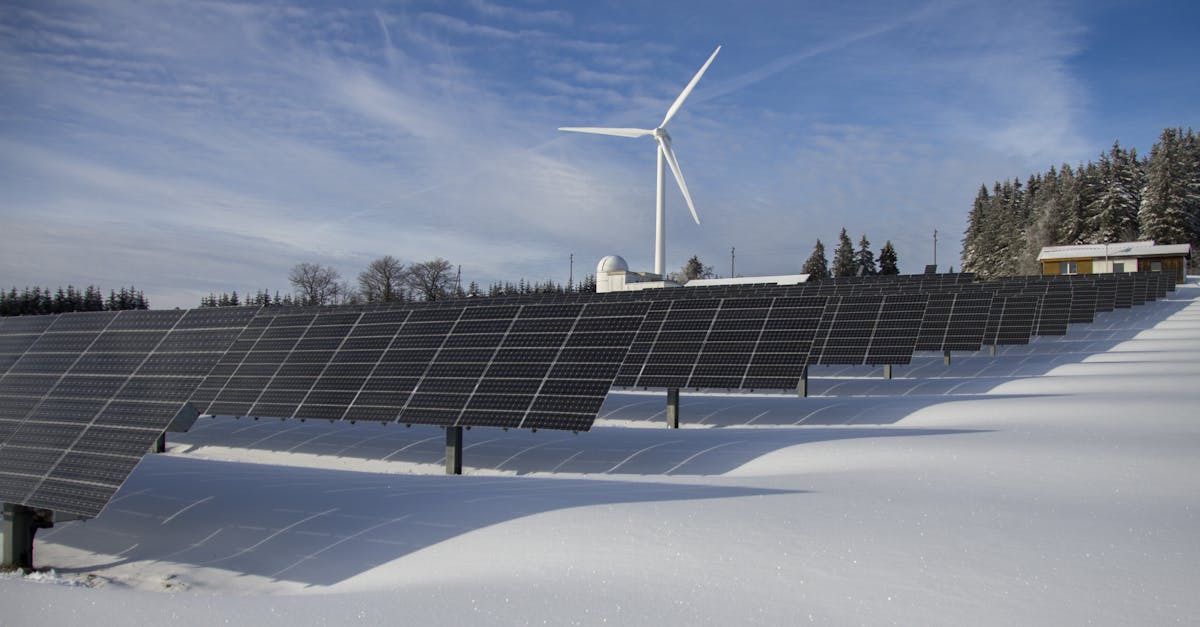
Community Engagement and Economic Opportunities
Wind energy projects often create significant opportunities for local communities, fostering economic development and job creation. The construction and maintenance of wind farms require a skilled workforce, leading to the creation of jobs in various sectors, such as engineering, construction, and operations. Local businesses benefit indirectly through increased demand for services and supplies, enhancing the overall economic ecosystem. This influx of jobs and support can lead to improved local infrastructure, boosting the quality of life for residents.
Community engagement plays a vital role in the success of wind energy initiatives. Local residents are more likely to support projects that actively involve them in decision-making processes and address their concerns. Educational programs and public meetings can foster a sense of ownership and responsibility among community members. Encouraging local investment in wind energy projects can further strengthen ties and ensure that the benefits of renewable energy are shared equitably, aligning with broader sustainability goals.
Challenges Facing Wind Energy
Wind energy faces several challenges that can impact its deployment and efficiency. One of the most significant issues is the intermittency of wind itself, where energy production can fluctuate based on weather conditions. This variability can create difficulties in ensuring a consistent power supply, often leading to reliance on traditional energy sources to fill gaps when wind production is low. Such dependence can undermine the potential benefits of transitioning to renewable sources.
Additionally, storage solutions for wind-generated energy remain a considerable hurdle. Current technology has not yet fully resolved the issue of effectively storing excess energy produced during peak wind conditions for use during calmer periods. As the demand for renewable energy increases, enhancing energy storage capabilities will be paramount. Addressing these challenges is essential for paving the way for a more sustainable integration of wind energy into the grid.
Addressing Intermittency and Storage Issues
Wind energy production is inherently variable, dependent on weather conditions and time of day. This intermittency poses challenges for maintaining a stable energy supply. As the share of wind energy in the energy mix increases, addressing these fluctuations becomes essential for grid reliability. Advanced forecasting methods help predict wind patterns, allowing for better integration into the energy grid.
Effective government policies play a pivotal role in promoting the growth of wind energy. Various nations have implemented frameworks that support the establishment and expansion of wind farms. These policies often include feed-in tariffs that guarantee a fixed payment for the energy produced, encouraging investment in renewable technologies. Additionally, streamlined permitting processes can significantly reduce the time and barriers associated with developing wind projects, contributing to a more robust renewable energy sector.
Substantial financial incentives are crucial in making wind energy an attractive investment. Governments frequently offer tax credits and subsidies aimed at reducing the initial costs of installation and operation for wind energy facilities. These measures not only lower the financial risk for developers but also increase the competitiveness of wind energy in the broader market. By creating a favourable economic environment, policies can stimulate both local and national economies while simultaneously addressing climate change through a shift towards cleaner energy sources.
Incentives and Subsidies for Development
Governments play a pivotal role in promoting the development of wind energy through various incentives and subsidies. Financial support mechanisms, such as tax credits and grants, can significantly reduce the initial investment costs for wind energy projects. These incentives not only encourage private investors to enter the market but also contribute to a more favourable economic landscape for companies that focus on renewable energy technologies. Additionally, such policies can help develop local industries and create jobs tied to wind energy construction and maintenance.
Subsidies for wind energy often extend beyond initial financial assistance. Long-term contracts, such as feed-in tariffs, guarantee fixed payments for energy produced, which stabilises revenue streams for wind farm operators. This financial certainty can attract larger investments and promote further innovation in wind technology. Moreover, government initiatives aimed at streamlining regulatory processes can help expedite the deployment of wind energy projects, thus fostering a more robust renewable energy sector and advancing national sustainability goals.
FAQS
What are the main benefits of wind energy for local communities?
Wind energy can provide significant economic opportunities, create jobs, and contribute to local infrastructure development, ultimately enhancing the quality of life for residents.
How does community engagement play a role in wind energy projects?
Community engagement is vital for building support and ensuring that local perspectives are considered in the planning and implementation of wind energy projects, leading to more sustainable outcomes.
What challenges does the wind energy sector currently face?
The wind energy sector faces challenges such as intermittency of power generation and issues related to energy storage, which can affect the reliability of wind energy as a primary energy source.
What solutions are being explored to address intermittency and storage issues in wind energy?
Solutions include the development of advanced battery storage systems, integration with other renewable energy sources, and improved forecasting technologies to enhance the reliability of wind energy supply.
How do government policies support the growth of wind energy?
Government policies often include incentives and subsidies for the development of wind energy projects, which aim to promote investment, reduce costs, and encourage the transition to renewable energy sources.
Related Links
Why choose wind energy over fossil fuelsWhat to consider when investing in wind energy
Roundup of the latest advancements in wind energy
Review of the best wind turbines for home use
10 benefits of wind energy
The historical development of wind energy technology